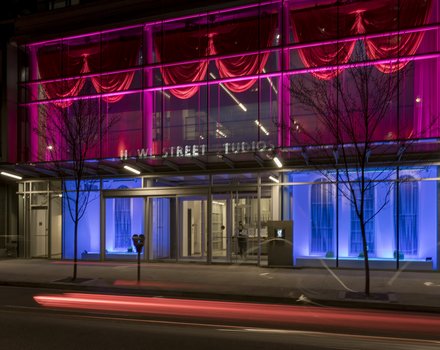

Susy Oliveira “Touching and Retouching”, Susy Oliveira
C$ 0.00 Excl. tax
- File number: EXHI1042
...
Gardens are fabrications of nature—spaces where design and aesthetics are imposed on ecosystems that would otherwise exist without human consciousness. The selection and arrangement of plants and flowers often accompany other structures that provide respite, reflection, and recreation. Gardens are often made to seem natural when in fact they are synthetic.
Susy Oliveira’s exhibition entitled touching and retouching contains two sculptures, three collages, and a photograph that are all constructed using digital prints. By representing architectural and organic forms through computational processes, this exhibition uses the garden as a metaphor to describe the digital world.
Oliveira is widely known for her photographic sculptures using chromira print portraits of human bodies, such as Time is never wasted, 2006. In her studio, she created a hard edge body from cut and glued pieces of white foam core. She numbered and photographed each part of the body, scanned them, and then superimposed digital images of body parts onto the foam core body. The result was a pixelated three-dimensional body sculpture laying on the floor assembled from photographs of body parts. The body appears to be some kind of representation of an intoxicated individual who is imagining themselves as an avatar suspended in an alternate state of being. Extending from this work, her current exhibition suggests that not only is the human body becoming increasingly distorted, but so is the natural world that we live in.
There is sometimes a fine line between reality, interpretation, and fiction: the world as it is, the world as we experience it, and the world as we imagine it. Objectivity and subjectivity are not distinct oppositional binaries; they are dimensions of existence that are in constant negotiation.
Each of the three photographic framed collages in this exhibition are multiples of palm leaves that are cut and layered on top of each other. The effect is that of time passing as the leaves, although static, appear to be moving either forward or backward through space.
touching and retouching presents the falsification of nature as a component of the human condition wherein our experience of our environment is mediated by each of our own unique lenses. What exists only exists in so much as we take it in. The mind is a photographic device in which sensory material is impressed and stored.
The sculptures in this exhibition depict a white flower inside a transparent vase and a white lattice with a transparent vase protruding through it. The vases are glass and the flower and lattice are made of foam core and photosensitive digital prints. The vases are incorporated into the sculptures in such a way that they seem to be bending the dimensions of the flower and the lattice.
The images on the prints are that of negative space. The only reference to photography is through the material used to create the sculptures—light, time, and space are alluded to but are not revealed on the surface of the photographic paper. The absence of an image on the surface of each sculpture leaves the viewer with only empty space. Oliveira may be suggesting that the space around the image is, in this case, more important than the actual image, and that reality is open to interpretation.
Curated by Justin Muir
Susy Oliveira is an artist working in photography, sculpture, and collage.
Selected exhibitions include shows at the Museum of Contemporary Canadian Art, Toronto; Friends, Glasgow; SAW Gallery, Ottawa; Khyber, Halifax; and, PLATFORM centre for photographic + digital arts, Winnipeg.
She is the recipient of grants from the Toronto Arts Council, the Ontario Arts Council, and the Canada Council for the Arts.
Her work has been featured in Canadian Art and HiFructose among other publications. Susy Oliveira lives and works in Toronto where her work is represented by Erin Stump Projects.
Susy Oliveira would like to gratefully acknowledge the support of the Ontario Arts Council and the support of the Toronto Arts Council.
Recently viewed
-
 Favoriten
Add to cart
Favoriten
Add to cart
Susy Oliveira “Touching and Retouching”, Susy Oliveira
C$ 0.00 Excl. tax


